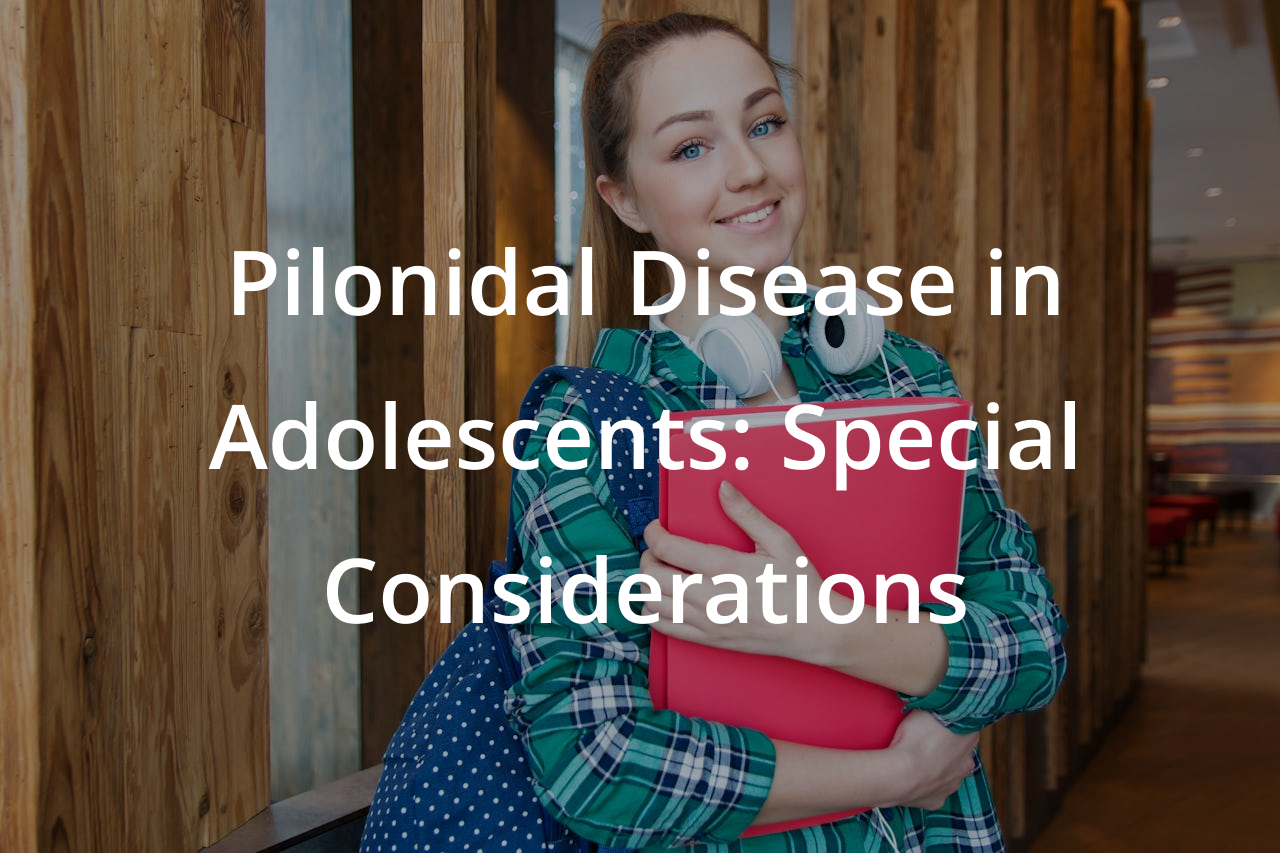Aug 10,2024
Pilonidal Disease in Adolescents: Special Considerations
Pilonidal disease, characterized by the development of painful cysts near the tailbone, is particularly prevalent among adolescents and young adults. This age group faces unique challenges when dealing with the condition, partly due to lifestyle and physiological factors. As a healthcare provider specializing in the treatment of pilonidal disease, Dr. Som understands the importance of addressing these specific needs to manage and treat the condition in adolescents effectively. This blog discusses how pilonidal disease manifests in teenagers and the special considerations necessary for their treatment and disease management.
Understanding Pilonidal Disease in Adolescents
- Prevalence and Risk Factors: Pilonidal disease often begins as a small cyst that can become infected and painfully inflamed. Adolescents, especially those active or sitting for prolonged periods (such as students), are at a higher risk. Poor hygiene, a sedentary lifestyle, excessive sweating, and friction from tight clothing can exacerbate the condition.
- Symptoms to Watch For: Adolescents with pilonidal disease may notice pain, redness, and swelling at the base of the spine. If an infection occurs, symptoms could escalate to pus or blood drainage, foul odor, and severe pain, making sitting or standing uncomfortable.
Special Considerations for Treatment
- Minimally Invasive Techniques: Given the active lifestyles of many teenagers, minimally invasive treatments are often preferable. These methods, such as laser hair removal or phenol injections, can effectively manage the disease with minimal downtime. Such therapies are less disruptive to their academic and social lives, promoting better compliance and outcomes.
- Importance of Early Intervention: Early diagnosis and treatment are crucial. Adolescents may ignore symptoms or delay seeking help due to embarrassment or fear. Educating parents and adolescents about the signs and risks of pilonidal disease is essential for early intervention and effective management.
- Lifestyle Modifications: Treatment plans should include advice on lifestyle modifications to prevent worsening or recurrence of the condition. Recommendations often involve:
- Hygiene: To prevent infection, regularly clean the affected area with gentle soap and water.
- Activity: Encouraging regular movement and reducing prolonged periods of sitting can help alleviate symptoms.
- Diet and Weight Management: Maintaining a healthy weight reduces pressure on the tailbone area, potentially decreasing the risk of cyst formation
Psychosocial Considerations: Due to the location and nature of the condition, adolescents may experience significant psychological stress from pilonidal disease. It is essential to address these concerns through supportive counseling and reassurance. Building rapport with young patients and encouraging open communication about their symptoms and feelings can improve their comfort and adherence to treatment.
Managing Pilonidal Disease in School Settings
- Accommodations at School: Adolescents may need specific accommodations at school, such as being allowed to stand during classes or having a modified physical education program to reduce the worsening of symptoms. Discussions with school officials and healthcare documentation can support these accommodations.
- Educational Support: When adolescents require surgery or extended periods away from school, it’s important to coordinate with educational institutions to ensure they receive the necessary support, including assignment extensions or home tutoring options if needed.
Conclusion
Managing pilonidal disease in adolescents requires a comprehensive approach that considers the physical, psychological, and social aspects of their lives. Healthcare providers can help manage this painful condition effectively by incorporating minimally invasive treatments, promoting early intervention, and advising on lifestyle changes. Additionally, providing support and education to both adolescents and their families is crucial to demystifying the condition and promoting better health outcomes. As always, working closely with a knowledgeable healthcare provider is essential to tailor treatment approaches to the unique needs of each adolescent.
